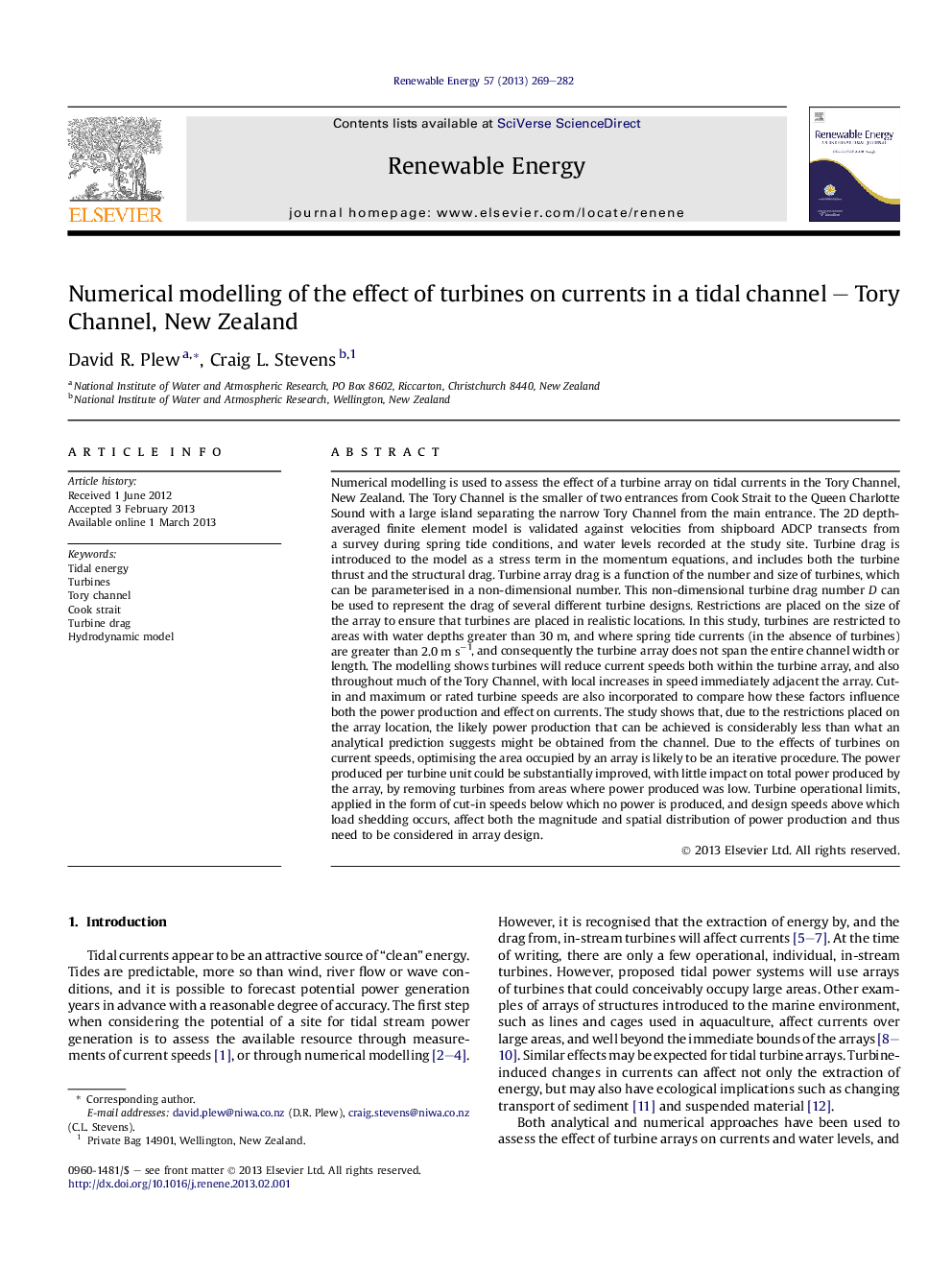| کد مقاله | کد نشریه | سال انتشار | مقاله انگلیسی | نسخه تمام متن |
|---|---|---|---|---|
| 300295 | 512479 | 2013 | 14 صفحه PDF | دانلود رایگان |

Numerical modelling is used to assess the effect of a turbine array on tidal currents in the Tory Channel, New Zealand. The Tory Channel is the smaller of two entrances from Cook Strait to the Queen Charlotte Sound with a large island separating the narrow Tory Channel from the main entrance. The 2D depth-averaged finite element model is validated against velocities from shipboard ADCP transects from a survey during spring tide conditions, and water levels recorded at the study site. Turbine drag is introduced to the model as a stress term in the momentum equations, and includes both the turbine thrust and the structural drag. Turbine array drag is a function of the number and size of turbines, which can be parameterised in a non-dimensional number. This non-dimensional turbine drag number D can be used to represent the drag of several different turbine designs. Restrictions are placed on the size of the array to ensure that turbines are placed in realistic locations. In this study, turbines are restricted to areas with water depths greater than 30 m, and where spring tide currents (in the absence of turbines) are greater than 2.0 m s−1, and consequently the turbine array does not span the entire channel width or length. The modelling shows turbines will reduce current speeds both within the turbine array, and also throughout much of the Tory Channel, with local increases in speed immediately adjacent the array. Cut-in and maximum or rated turbine speeds are also incorporated to compare how these factors influence both the power production and effect on currents. The study shows that, due to the restrictions placed on the array location, the likely power production that can be achieved is considerably less than what an analytical prediction suggests might be obtained from the channel. Due to the effects of turbines on current speeds, optimising the area occupied by an array is likely to be an iterative procedure. The power produced per turbine unit could be substantially improved, with little impact on total power produced by the array, by removing turbines from areas where power produced was low. Turbine operational limits, applied in the form of cut-in speeds below which no power is produced, and design speeds above which load shedding occurs, affect both the magnitude and spatial distribution of power production and thus need to be considered in array design.
► We modelled the effect of tidal turbines in the Tory Channel, New Zealand.
► We used an array drag term that describes a range of array density and turbine size.
► Flow is reduced through the channel and the wider Queen Charlotte Sound.
► Array drag affects the spatial and temporal variability of power production.
► Effect of cut-in and rated turbine speeds on currents and power are considered.
Journal: Renewable Energy - Volume 57, September 2013, Pages 269–282